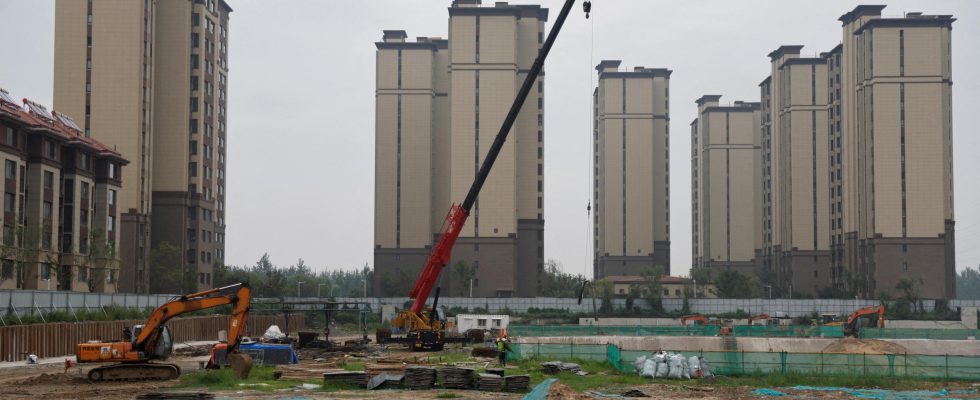A study carried out using satellite data paints a worrying picture of urbanization in China. Of 82 large cities analyzed by researchers, almost half are sinking, some of them “rapidly”.
4 mins
The cities of China grow and develop. But this wave of urbanization could be threatened by “subsidence”, the sinking of the surface of the earth’s crust. A study published on April 18 in the newspaper Science reveals that as they expand, certain Chinese metropolises also sink.
To understand the scale of the phenomenon, a team of researchers from different Chinese universities looked at 82 large cities, all populated by more than 2 million people. The data provided by the Sentinel-1 satellite allowed them to measure the changes and vertical movements of the earth across the country between 2015 and 2022. And the conclusions are not very encouraging.
The study shows that 45% of the territories examined are sinking at a speed “ moderate “, at the rate of more than three millimeters per year, and that 16% are sagging ” quickly », at a rate of more than 10 millimeters per year. This concerns respectively 67 and 270 million inhabitants.
Danger on the coasts
Cities facing severe subsidence are concentrated in five regions and cover both the coastline and the interior of the country. Beijing and several regional capitals such as Fuzhou and Xi’an, among others, are affected by the phenomenon. The same goes for Tianjin, where thousands of residents were evacuated from buildings last year after fault lines appeared in the streets.
But the study is particularly concerned about the consequences of subsidence for coastal regions. According to researchers’ projections, a quarter of coastal areas will be below sea level by 2120, due to ” the combined effects of urban subsidence and rising water levels » caused by climate change. A situation that could put millions of people in danger with threats of repeated flooding.
Human activity
Researchers associate several factors, both human and natural, with this evolution. They target in particular the development of transport networks and mining. But above all they point to the responsibility for the weight of the buildings, “ which exerts geostatic pressure on the urban subsoil » and the depletion of groundwater, the water from which is drained to meet the needs of populations. This drying leads to “ a reduction in pore pressure and soil compaction », remind the scientists.
“ I think water extraction is probably the main reason », Estimates Robert Nicholls, professor at the University of East Anglia, interviewed by the BBC. “ In China, many people live in areas that were sedimented quite recently, geologically speaking. When you remove groundwater or drain soils, they tend to sag », Analyzes the researcher.
Control water extraction
The phenomenon is not new. Shanghai, for example, sank 2.6 m between 1921 and 1965 and more than 3 m in a century. But it has managed to reduce its rate of subsidence to around five millimeters per year by putting in place environmental measures to regulate water extraction. Similar measures taken in Tokyo and Osaka have also made it possible to slow down the subsidence of Japanese metropolises.
Successes which push researchers to recommend above all “ long-term control of groundwater extraction » to stop and stabilize the process. As for the coastline threatened by flooding with land subsidence and rising water levels, the study is betting on the effectiveness of dikes, but the latter require “ constant maintenance and improvements ”, because, she recalls, “ they are also subject to subsidence “.
Completely stopping subsidence is impossible and stopping it remains difficult. “ You have to live with what’s left » and adapt, confides Professor Nicholls at New York Times. The study’s researchers call for efforts “ coordinated and collaborative » between politicians, engineers and researchers to “ respond effectively to the challenge of city subsidence. »

